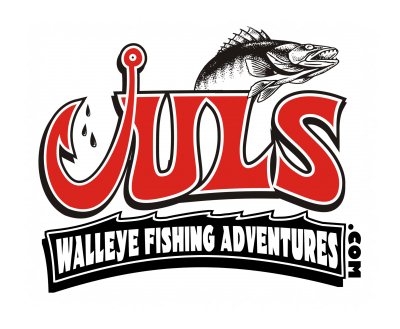Juls WFA Blog
Fishing with the Wilburn Family 8/1/19
by Capt Juls on 08/01/19After several days off, due to reschedules, it was back to business this morning. There was a 15mph NE wind on my back deck at 3am, which kind of pissed me off. It's been NE for days now. I looked at the iWindSurf app to see what the forecast would be over in Huron for the rest of the morning, and it showed it laying down a little bit...not much, but enough to make it a "go".
Fishing with Mick and Kyle McMahon Day 2 7/27/19
by Capt Juls on 07/28/19I hit Mazurik's at 5:20 and waited for someone to show up, who would be willing to back me in, since my crew was out on South Bass Island. I didn't have to wait long, before fellow Capt., Tony Hernandez, showed up with a friend and offered to help. Thanks, Tony!
Fishing with Mick and Kyle McMahon 7/26/19
by Capt Juls on 07/26/19I got to sleep in this morning. My crew wasn't expected to fly into Port Clinton until 8:30am, so I set the alarm for an extra hour and took advantage of some REM and weird dreams this early am.
Fishing with Eric and Rachel 7/21/19
by Capt Juls on 07/21/19Eric and Rachel came in from Nebraska, to spend some downtime from their EMT/Fire Fighter jobs, and to catch some wiley walleye here on Lake Erie's Western Basin.
Fishing with Steve Gulas and Jim 7/18/19
by Capt Juls on 07/18/19As I headed down the highway towards the other end of town, I realized I had forgotten to put a cooler in the boat before I left. "Ugh", I thought. I didn't have time to go back home and grab one, so I texted Steve to ask if he could bring his. He could, and said it already had ice in it, so that was a relief. I was meeting them at Big Bopper's at 4:45, and they were right on time.
Fishing with Scott and Cathy 7/15/19
by Capt Juls on 07/15/19This morning, I met Scott and Cathy, of Philadelphia, at Mazurik's at 5:15 and we launched at 5:30. It was still dark enough to need the navigation lights, but the eastern horizon was glowing hues of reds and oranges against a gray blue sky. It was going to be a gorgeous sunrise. The lake was flat, so our ride out was a pleasant one.
Fishing with Cheryl and Diane 7/14/19
by Capt Juls on 07/14/19Today's charter was delayed a bit, so the north winds could lay down. I had two ladies fishing with me today, and I thought it was a better idea to wait for better conditions. Cheryl and Diane met me at my house at 7am and we drove into town for some ice for the coolers, before heading on over to Mazurik's to launch.
Fishing with Shane, April, and Scout 7/13/19
by Capt Juls on 07/13/19That's it...I'm buying a regular alarm clock! I can't trust my phone anymore. I know I set the alarm last night before bed, and when I woke up this morning, I thought I had woken up before my alarm...which I do quite often, but when I looked at my phone it was showing a time of 3:43. I set the alarm for 2:45....now, I only had 15 minutes to feed the dogs, have a cup of coffee, and brush my teeth before grabbing my boat bag and heading out the door to go get my crew, who would be waiting for me at East Harbor Campground's welcome shack at 4:30am (with a 7 year old!).
Fishing with Don and David Goodrich 7/12/19
by Capt Juls on 07/12/19This morning I had the pleasure of fishing with return customers, Don and his son David. Don was 79 when he started fishing with me, and is now 81. He and David make it an annual trip, to add to their memories together, and usually do it in June, but their trip had to be rescheduled, due to weather last month.
Fishing Day 2 with Mike and Ben Roseland 7/10/19
by Capt Juls on 07/10/19Mike and Ben fished with me on Monday, and went to Cedar Point Amusement Park yesterday, and then fished with me again this morning. Monday's trip was delayed due to wind, so there was no blog. I got home too late to add it. We had gone out of Catawba on Monday and fished between the islands, just west of Green, and down to Catawba Point. The fishing was poor in my mind, but the father and son team said they enjoyed it. They didn't mind catching sheepshead, white perch, and white bass along with the walleye. We only kept 14 walleye that were anywhere from 15 1/2" to 18 inches for a total of 22 pounds.
Fishing with Caleb and Jacob 6/9/19
by Capt Juls on 07/09/19
Fishing with Bill and Norm 7/6/19
by Capt Juls on 07/06/19This morning did not start as I had planned...deep sigh...
Fishing with Joel, Roxy, and Chris 6/29/19
by Capt Juls on 06/29/19The day was forecast to be a hot one, so I wanted to get an early start again, and picked my crew up from the White Caps Motel at 4:20. Joel and Roxy are from Wyoming, and Chris is a relative from Michigan. We headed into downtown to eat at Ala-Carte, which opens at 4:30am, before heading over to Huron to launch.
Fishing with Maynard and Jody Derby 6/27/19
by Capt Juls on 06/27/19This morning, I took my coffee out on the back deck to check the weather. I was greeted by some lightning. A few seconds later deep rumbles of thunder growled across the sky out over the lake. "Ugh", I thought and grabbed my phone out of my robe's pocket to check the radar. I was hoping it wasn't going to ruin the plans for the morning.
Fishing with Jay, Megan, and Kosta 9/26/19
by Capt Juls on 06/27/19Picked my crew up from the "Our Guest Inn" at 4:45 and headed to Big Bopper's for some breakfast after stopping off at Rickard's for some ice and minnows. I like to take minnows along, so when we finish with our walleye in a quick fashion we can go look for some perch. Memories are made during these fishing trips, so why hurry it. Life goes by too fast as it is.
Fishing with Rich and Chris Jacklin 6/23-24/19
by Capt Juls on 06/25/19Yesterday, was the first day of a two day trip with Rick Jacklin and his son, Chris, from Wisconsin.
Fishing with Ryan, Diane, and Chris 6/19/19
by Capt Juls on 06/20/19Picked my crew up at their hotel at 4:45 and headed to Rickard's for some Emeralds to use for perch after we got our walleye this morning. Hit the gas station and then Mickey D's, because my crew was running behind this morning by 15 minutes, and a stop to Big B's would have made us late for a perfect sunrise on the water.
Fishing with Mike and Vicky Phillips 6/18/19
by Capt Juls on 06/18/19This morning, I had the winners of a donated trip. They won it at the South Shore Marine Seminar Event, that was held this past March.
Fishing with Craig and Teddy 6/12/19
by Capt Juls on 06/12/19Today was the second day of a 3-day trip. Yesterday, when I dropped them off, I asked, "Can I pick you up at 4:30 tomorrow? I know you're from different time zones, so if that's too early..." Teddy immediately said, "No, no...that's fine".
Fishing with Craig and Teddy 6/11/19
by Capt Juls on 06/11/19No blog the last three days, because of reschedules...so, I got some much needed sleep and yard work done over the weekend.


